I have been holding onto this post for several weeks and I’m not sure why. But yesterday morning I learned that the Grand Master himself, Jim Smith, just passed away. This post is in memorial to him.
Now, the last installment in the epic three part coverage of the James J. Smith collection at Heathcote Gardens.
Here’s a ficus microcarpa that you’ll see tagged with the common name “kinmen” ficus. That’s what the Taiwanese call this leaf shape f. microcarpa, or something close to it (I say that because taking a language that uses idiographic text and tonal language and transcribing it into English is difficult. I’ve heard variation like kingman, kenmen, kinmen, Kidman et al, that’s why I just use ficus microcarpa.)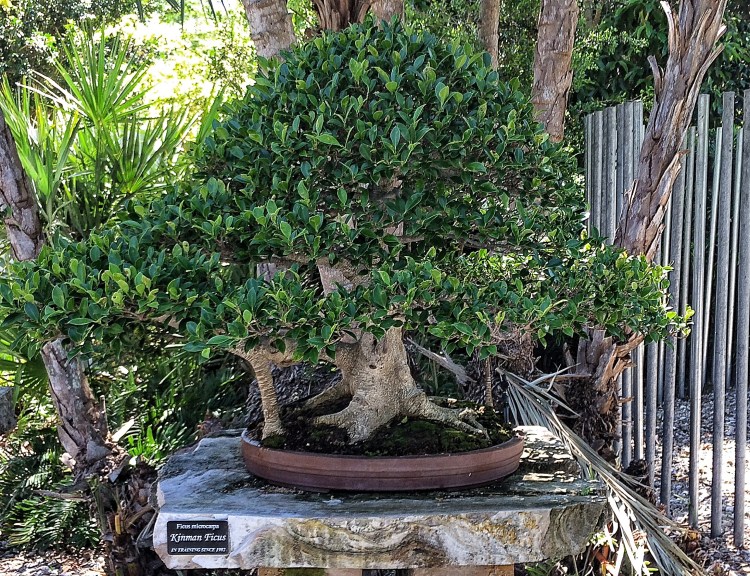
A Brazilian Raintree. This one is pretty awesome. 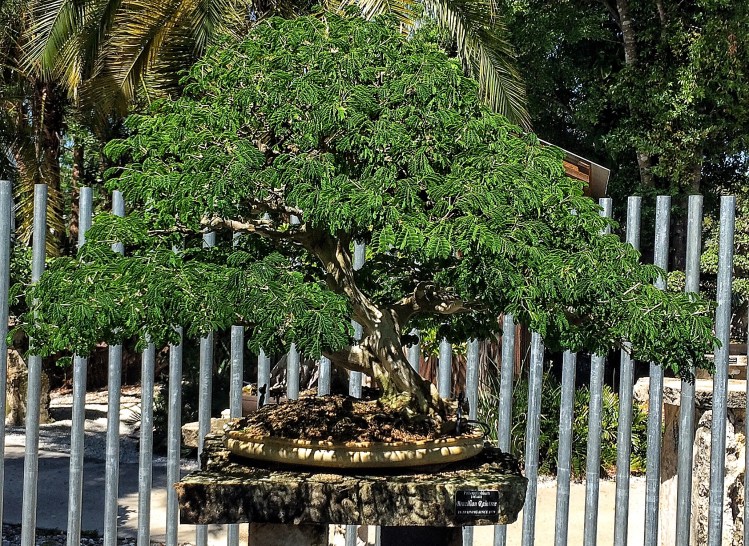
I really appreciate the hackberries he has. This is the regular variety, not the southern one….y’all. 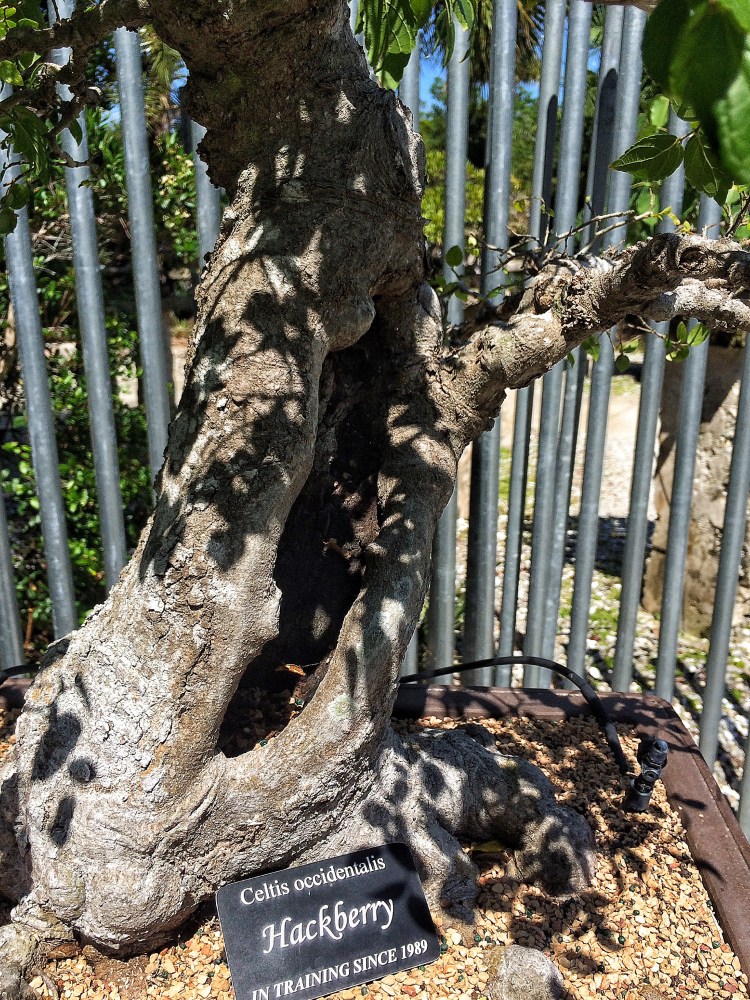
It has a great hollow and a huge trunk. 
And another.  I said it once already in the previous posts; he liked those clumps.
I said it once already in the previous posts; he liked those clumps.
Here’s a dwarf black olive. Pretty old. The botanical name used to be bucida spinosa but they’ve done some research and it’s been identified as a “terminallia molinetii” (a tree native to mexico) but it seems that, surprise, surprise, it’s not totally accepted yet by Florida botanists. So they’ve been calling it bucida molinetii. 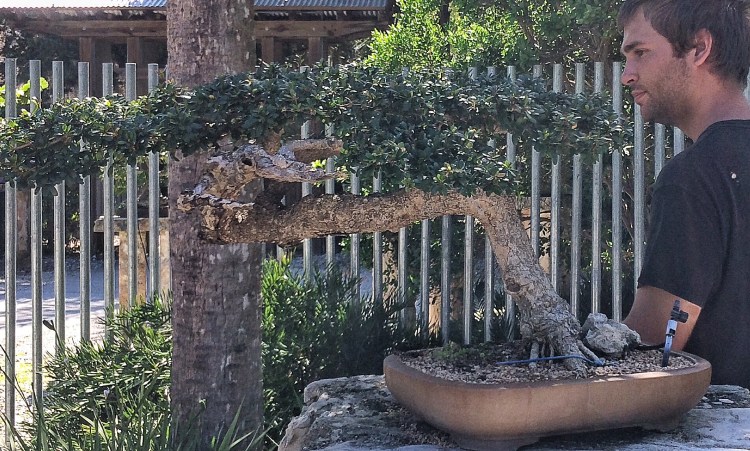 I got all this from the Florida Native Plant Society. I didn’t know this but the dwarf spiny olive is also native to the extreme south of Florida (it isn’t a true olive, “olea” variety) but it’s extirpated in the wild. But, weirdly, it’s considered invasive in the Florida Keys.
I got all this from the Florida Native Plant Society. I didn’t know this but the dwarf spiny olive is also native to the extreme south of Florida (it isn’t a true olive, “olea” variety) but it’s extirpated in the wild. But, weirdly, it’s considered invasive in the Florida Keys.
I am tickled by this next tree. 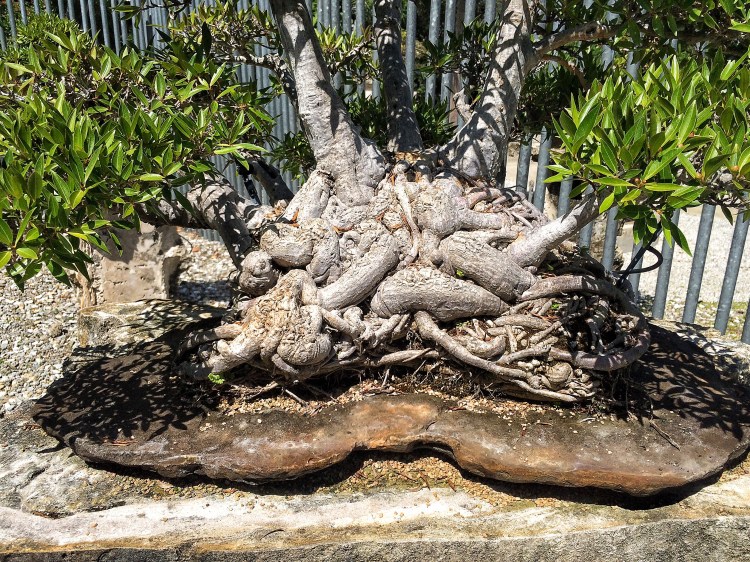 It too has little soil, like some of his other ones I’ve shown. I like it because it looks like a corpulent female figure to me.
It too has little soil, like some of his other ones I’ve shown. I like it because it looks like a corpulent female figure to me.  Almost like the prehistoric Venus of Willendorf figurine.
Almost like the prehistoric Venus of Willendorf figurine. 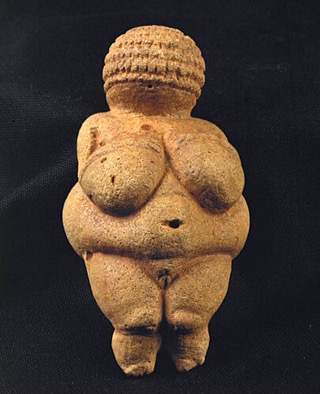
This next tree is, I think, a Spanish stopper, eugenia foetida
This next one Seth likes to call a pitanga, the Spanish name for a Surinam cherry (eugenia uniflora)  Kinda neat. It does have an edible fruit.
Kinda neat. It does have an edible fruit.
Another Willow leaf. 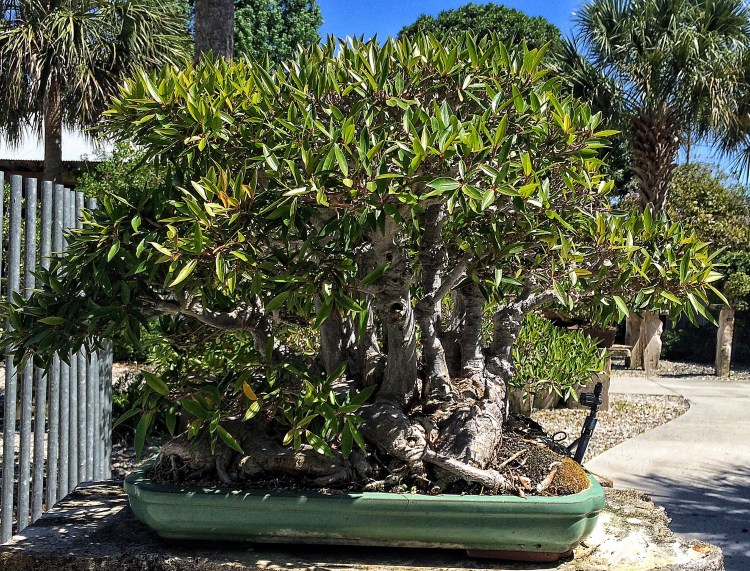
This one looks like it’s dancing. F. Salicaria. 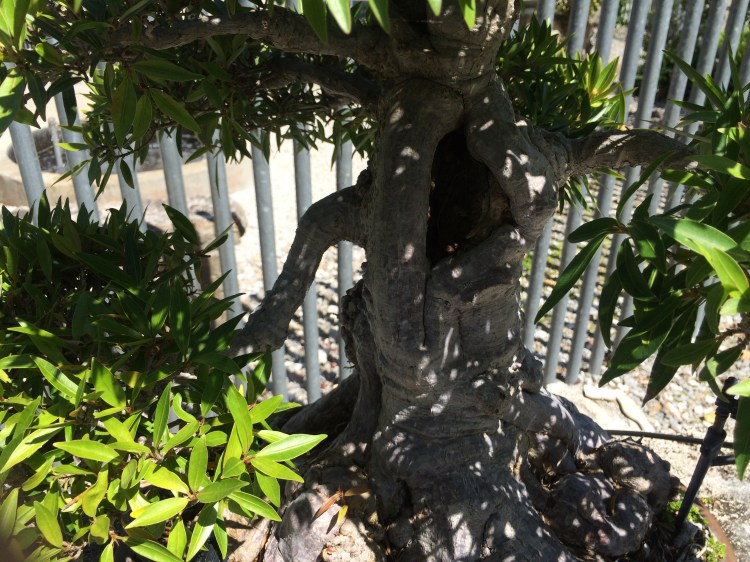

This looks like a dinosaur with a long neck. Seth is rebuilding the canopy on it. 
A conocarpus erectus, Florida buttonwood. 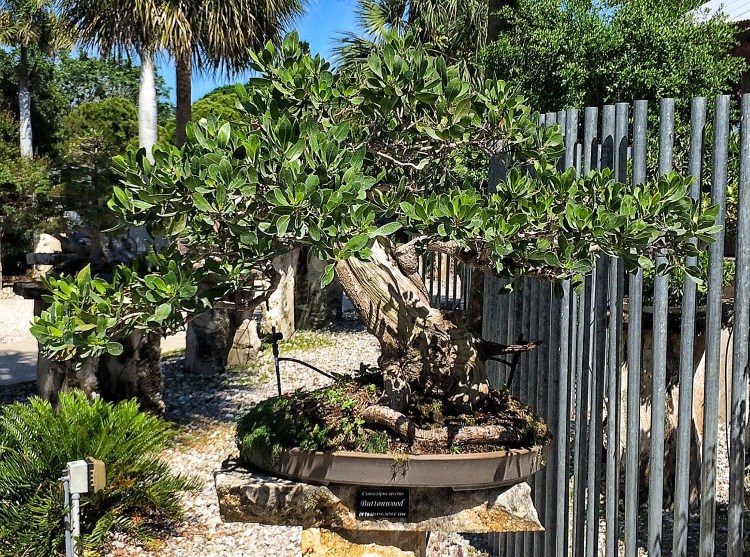
This one is another of the trees that Jim called ficus exotica. With the help of Juan Andrade, Seth thinks he’s finally figured out the real binomial name, ficus pertusa. We are awaiting a dna test. 
This is a massive bougie, just coming into bloom. 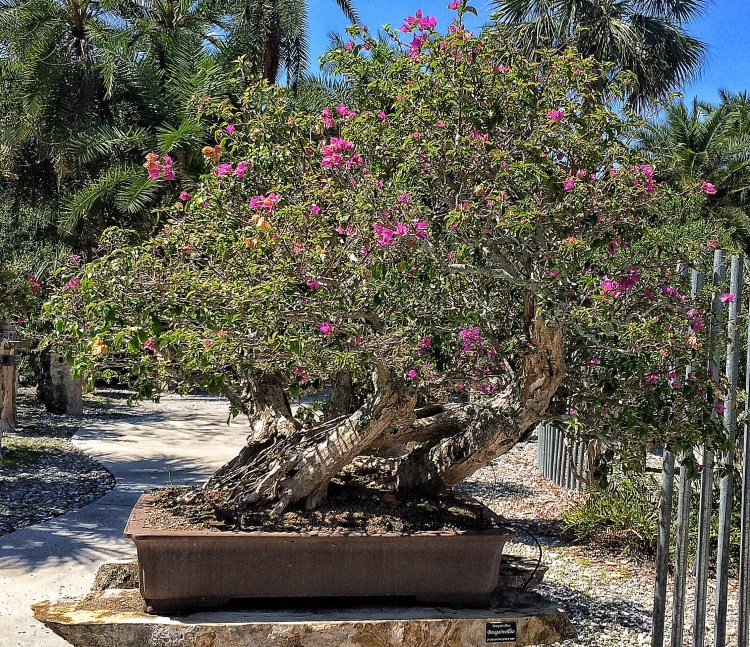
Here’s the same tree several years ago, with my bud Rick posing next to it.
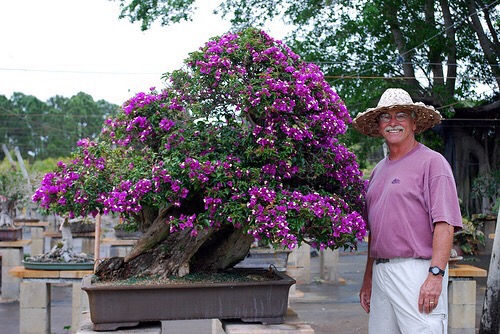 You’ll notice the deterioration of the trunk from rot.
You’ll notice the deterioration of the trunk from rot.
Seth just trimmed this Willow leave, hence all the leaves in the pot. 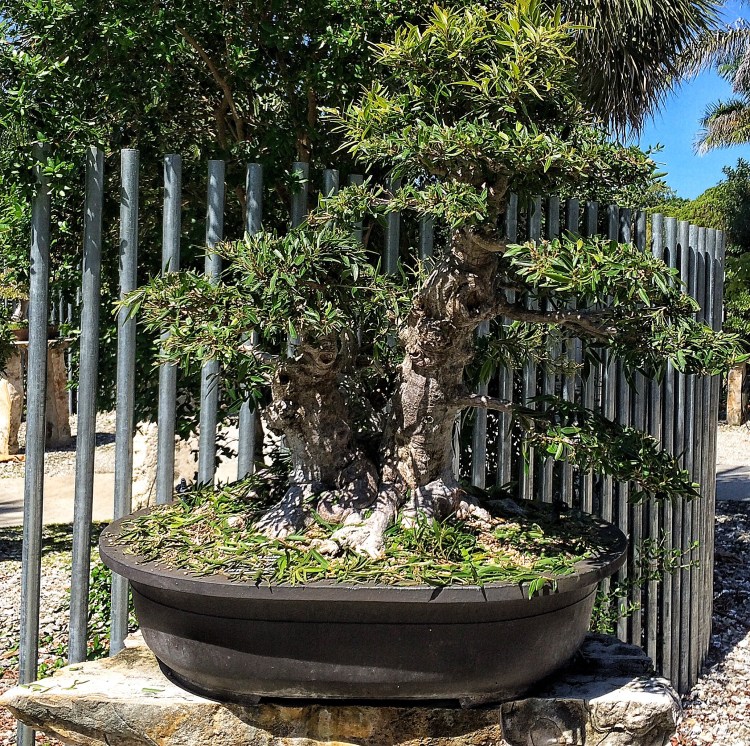
This next salicaria is busting out its pot. 
This next tree isn’t one of Jim’s, it’s actually a medium sized ficus microcarpa that is a part of the Heathcote gardens plantings. I say medium sized because the tree will be two to three times this size when it’s mature. Whomever says that ficus aren’t real trees and, therefore, not worthy of bonsai need just look at it and be still in their tongues. 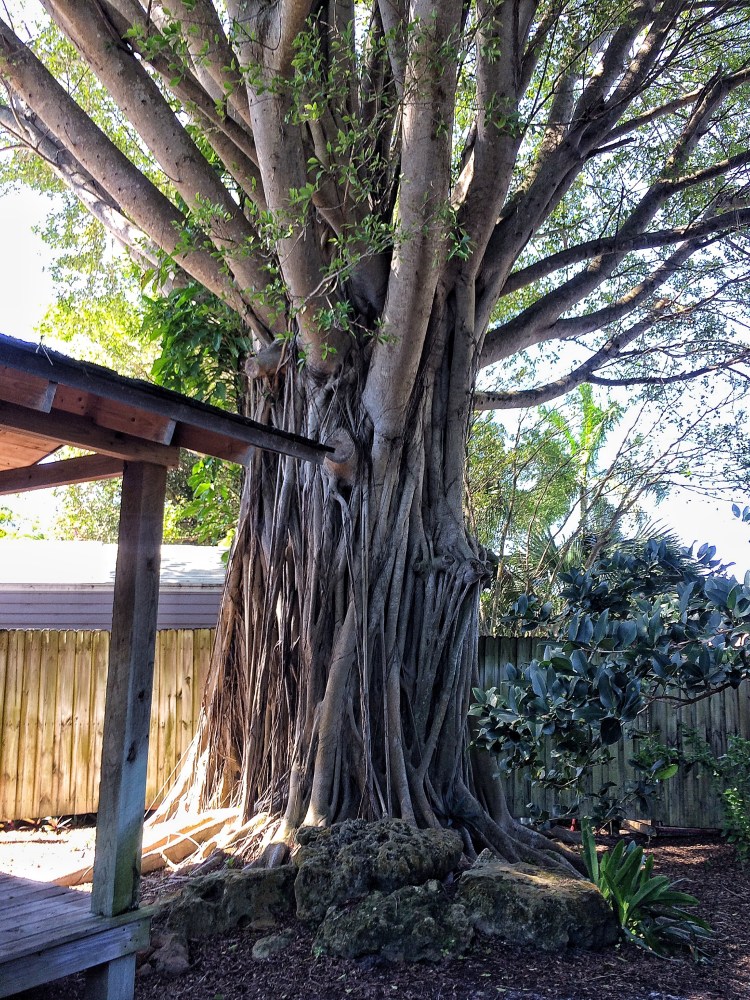
And that’s that.
My favorite tree in the exhibit was one of the first I posted, in part one of the series. A Ficus microcarpa.
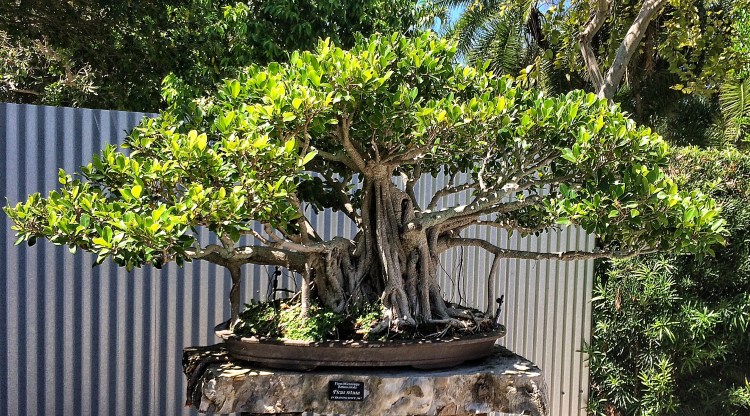 It truly represent a banyan ficus bonsai to me. Wider than tall, aerial roots and all. I like it.
It truly represent a banyan ficus bonsai to me. Wider than tall, aerial roots and all. I like it.
With that, I’ll end the tour. It’s sad that Jim has passed away but we have this public collection to remember him by. I truly suggest a visit. This next pic was from Bonsaibark.com (they borrowed a whole blogpost from me so I’m borrowing a pic from them). 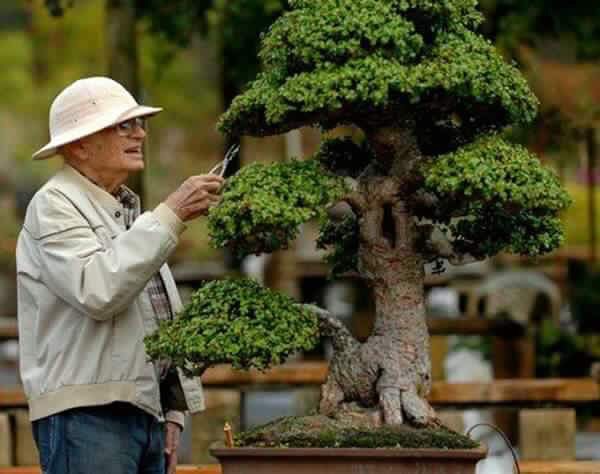 That’s Jim pruning his huge portulacaria. One of my favorite trees as well.
That’s Jim pruning his huge portulacaria. One of my favorite trees as well.
There’s been a lot of talk about the multigenerational nature of bonsai trees recently. My friend Seth, the curator of this whole collection, was approved to take care of Jim’s trees by Jim himself. The torch was passed. 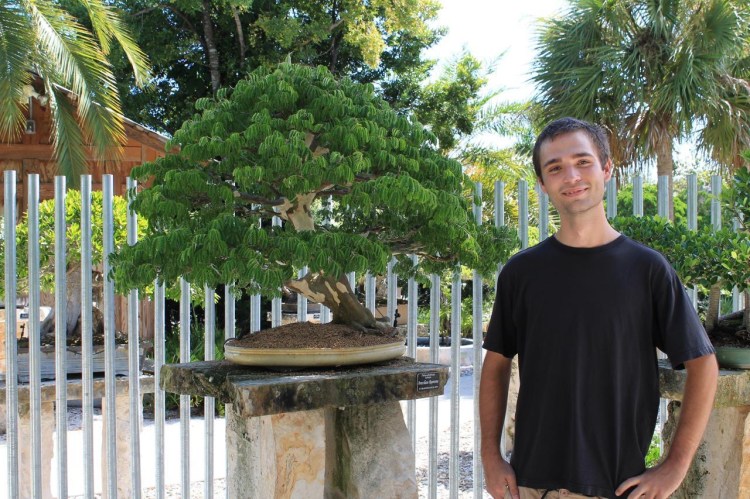 And I’m glad he got the job. Truth be told, I put in a resume for the position myself but it was for the best that I didn’t get it. I think it has allowed Seth to grow, not only in bonsai, but I think the responsibility of taking care of a legendary collection of trees has taught him to be a better man. And I’m honored to know him and call him friend. And he’s doing a good job too. The trees are healthy and looking good.
And I’m glad he got the job. Truth be told, I put in a resume for the position myself but it was for the best that I didn’t get it. I think it has allowed Seth to grow, not only in bonsai, but I think the responsibility of taking care of a legendary collection of trees has taught him to be a better man. And I’m honored to know him and call him friend. And he’s doing a good job too. The trees are healthy and looking good.
Jim had some hard years recently, his wife and son passed away before him, his vision had all but left him, he had to move into an assisted living facility. But he had a full life, he grew some great trees and made a lasting impression upon the bonsai world. I hope he has some trees to prune wherever he may be. Godspeed Jim, I wish I had known you better.
Thank you sir.
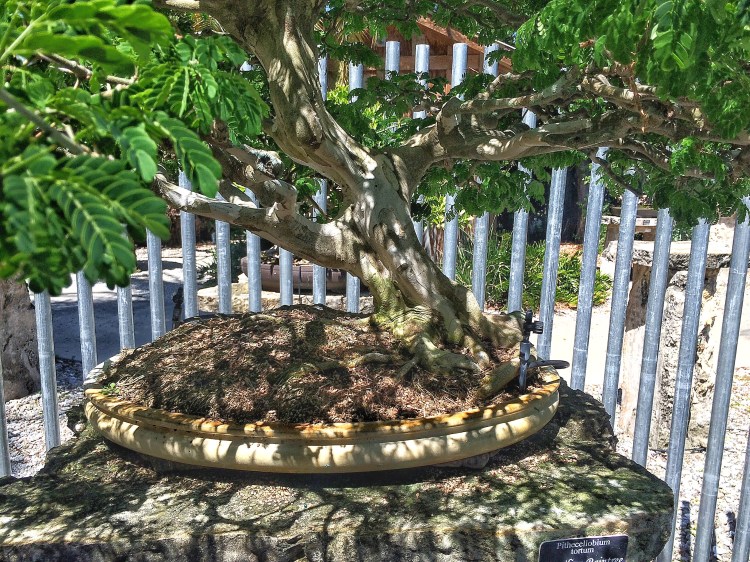
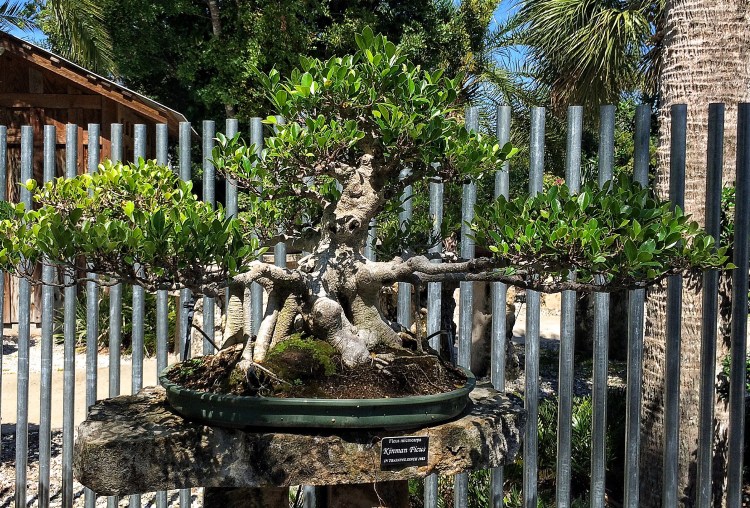
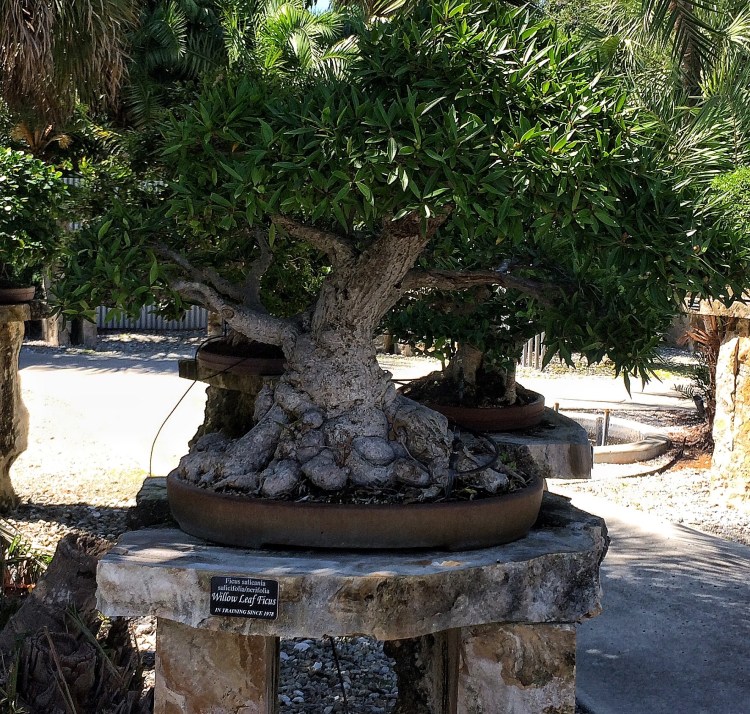

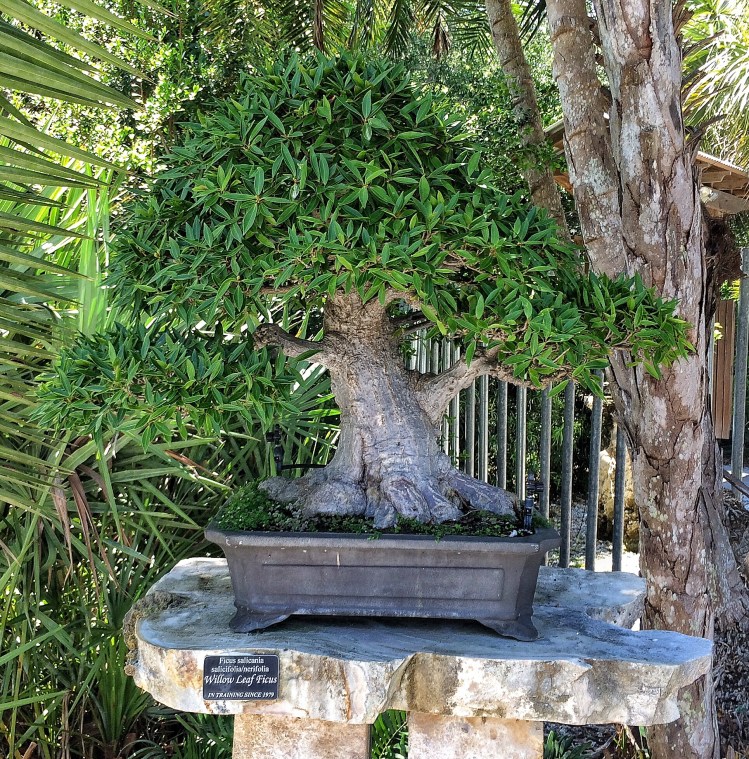




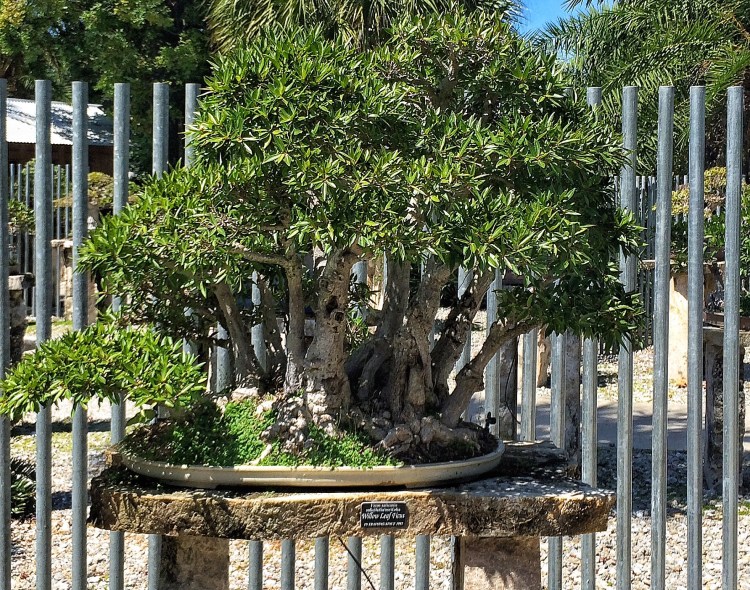
Nice stuff Adam. I appreciate your insights and comments about each tree. Mr. Smith was a cool old guy… he seemed ancient even when I visited his nursery over 20 years ago! See you at the shows, Carl May Lake Worth PS, Agree. Seth = Good guy
LikeLike
… he had a full life, he grew some great trees and made a lasting impression upon the bonsai world. I hope he has some trees to prune wherever he may be. Godspeed Jim, I wish I had known you better.
Nicely put. Adam, you are a good writer. I wish I got to meet Jim. I hope to see some of Jim’s trees in other collections in the future, e.g. the National and NC Arboretums. They appear to be in very capable hands now. I will have to visit.
LikeLike
The impermanent nature of all things. Body and flesh eventually give way; grace, beauty, and sprit stay. RIP Sir.
LikeLike
Well done Adam……Jim was an awesome person…..so glad I could call him a friend…..
LikeLike
I’m glad I can call you my friend
LikeLike
Adam, very nice tribute!!!
LikeLike
Love your latest addition of “Jim Smith’s Bonsai Collection at Heathcote’, we will all miss Jim and value his gifts to us .
Noreen S.
On Fri, Jul 1, 2016 at 3:37 AM, Adams Art and Bonsai Blog wrote:
> adamaskwhy posted: “I have been holding onto this post for several weeks > and I’m not sure why. But yesterday morning I learned that the Grand Master > himself, Jim Smith, just passed away. This post is in memorial to him. > Now, the last installment in the epic three part” >
LikeLike
Lovely post, Adam.
LikeLike